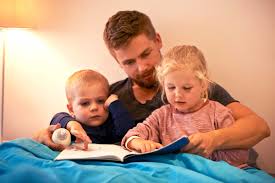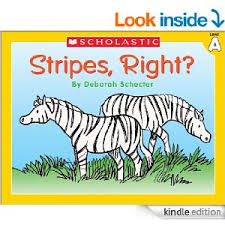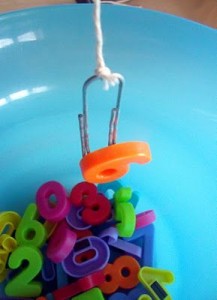Welcome back to Creating A Learning Environment. This is our second blog in our new reading series. If you missed last weeks blog, which was the first blog in the series, click on the link below to read it.
Reading strategies to teach children 4- 9 year olds
This blog is all about the essential concepts about texts that children need to know in order to become successful readers. These concepts develop over time and it is hoped by the end of Kindergarten most children would know all 22.
Below is an outline of what each concept is, how you can check if your child knows each concept and a free concepts of print table that you can print off and use with your child or children in your classroom.
The concepts of print can be categorised into five sections.
Section 1 – Book concepts
1. Identifies front of book – does the child know where the front cover is?
2. Identifies back of book – does the child know where the back cover is?
3. Identifies the title – can the child find where the title is?
Section 2 – Reading Concepts
4. Words carry meaning – does the child know that we read the words and not the pictures?
5. One to One correspondence – can the child point to each word when an adult is reading?
Section 3 – Directionality Concepts
6. Identifies the beginning of the text – can the child point to the beginning of the text on the correct page?
7. Left to right and top to bottom – does the child understand that we read left to right and top to bottom?
8. Return Sweep – does the child know that when you finish one line you go down to the next line, starting on the left?
Section 4 – Letter and word concepts
9. First word on page – can the child point to the first word on the page?
10. Last word on page – can the child point to the last word on the page?
11. Identifies one word and two words – can the child point to one word and then show two words with their fingers?
12. First letter in a word – can the child show the first letter in a word?
13. Last Letter in a word – can the child show the last letter in that word?
14. Identifies one letter and two letters – can the child point to one letter and then show two letters with their fingers?
15. Naming 3 letters on the page – Can the child name and point to three letters?
Section 5 – Punctuation marks
16. Capital letter – can the child point to a capital letter on the page?
17. Lower case letter – can the child point to a small letter on the page?
18. Full stop – can the child name this punctuation or identify why it is used?
19. Question mark – can the child name this punctuation or identify why it is used?
20. Exclamation mark – can the child name this punctuation or identify why it is used?
21. Comma – can the child name this punctuation or identify why it is used?
22. Quotation marks (Speech Marks) – can the child name this punctuation or identify why it is used?
If you are checking to see if your child or a child in your class has an understanding of each concept you can use the questions below to guide you. You can pick any book with large print and ask a few questions for each page. Do not try and ask all questions on one page. Ensure you read the child the story as well so it is an engaging task for them. You can start the session by asking them to help you learn about books.
| Concept | What to ask |
| Identifies front of book | “Show me the front of this book.” |
| Identifies back of book | “Show me the back of this book.” |
| Identifies the title | “Show me the name of this book or story.” |
| Words carry meaning | “Show me where I start reading.” |
| One to One correspondence | “You point to the words while I read the story.” (Read slowly, but fluently). |
| Identifies the beginning of the text | “Show me with your finger where I have to begin reading.” |
| Left to right and top to bottom | “Show me with your finger which way I go as I read this page.” |
| Return Sweep | “Where do I go then?” |
| First word on page | “Use your finger to show me the first word on this page.” |
| Last word on page | “Use your finger to show me the last word on this page.” |
| Identifies one word and two words | “Move your fingers until I can see one word. Now, show me two words.” |
| First letter in a word | “Show me the first letter in a word.” |
| Last letter in a word | “Show me the last letter in a word.” |
| Identifies one letter and two letters | “Move your fingers and show me one letter. Now, show me two letters.” |
| Naming 3 letters on a page | “Show me three letters that you know on this page and tell me the name of each one.” |
| Capital letter | “Use your finger to show me a capital letter.” |
| Lowercase letter | “Use your finger to show me a small letter.” |
| Full stop | “What is this called?” or “What is this for?” |
| Question mark | “What is this called?” or “What is this for?” |
| Exclamation mark | “What is this called?” or “What is this for?” |
| Comma | “What is this called?” or “What is this for?” |
| Quotation marks (Speech marks) | “What are these called?” or “What are these for?” |
The questions above can be used every time you read with your child. You wouldn’t ask all these questions each time but you may pick a few to focus on. It is important for children to know how texts work in order to have a great start as a beginning reader.
Below is a free card that we have made that you may want to put in your child’s book or somewhere in the classroom as a reference point for you. Click on the document link and simply print.
We hope you have found this article insightful and helpful. Next week the third blog of the reading series will be uploaded. If you would like to read more from this author please click on some of her recent articles below.
10 Ways To Help Your Child With Math
10 Ways To Help Your Child Learn To Read
How to increase your child’s achievement through a “growth mindset”
Until next time …
Kelly Pisani


















